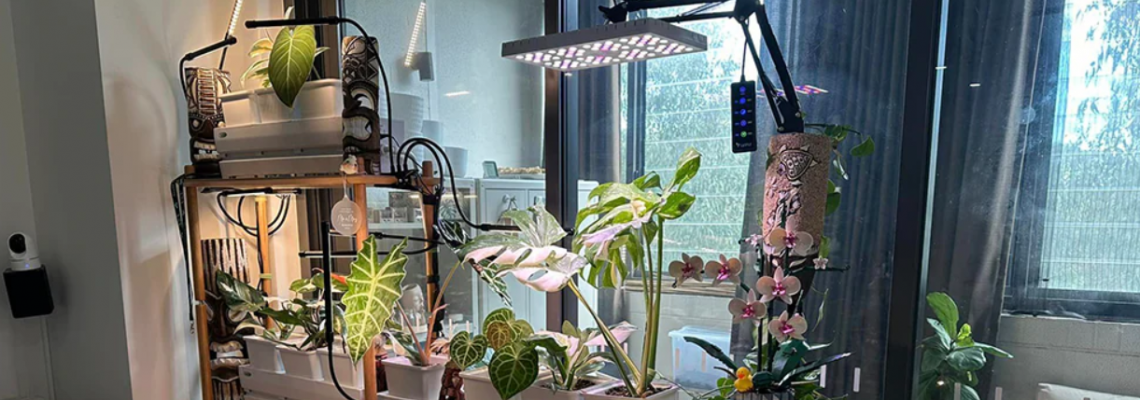
As agriculture faces increasing pressure from climate change, rising populations, and limited natural resources, growers are turning to innovative technologies to maintain productivity and sustainability. Among the most significant advancements in Controlled Environment Agriculture (CEA) is the adoption of energy-efficient LED grow lights. In 2025, these lights are no longer just a modern upgrade they represent a vital evolution in how food is grown in indoor farms and greenhouses. LED grow lights offer precision, efficiency, and adaptability that older lighting systems simply can’t match. Unlike traditional high-pressure sodium (HPS) or fluorescent fixtures, LEDs consume significantly less energy, generate minimal heat, and can be customized to deliver specific light spectrums tailored to each growth stage of the plant. This targeted approach results in healthier crops, faster growth cycles, and higher yields with reduced environmental impact.
Whether you operate a compact vertical farm or a large-scale commercial greenhouse, switching to LED grow lighting can lower your operational costs, reduce energy consumption, and contribute to long-term sustainability goals. With smart features like automated control, spectrum tuning, and integration with environmental monitoring systems, LED technology is paving the way for smarter, more resilient farming in 2025 and beyond.
1. Energy Efficiency That Pays Off
LED grow lights use up to 70% less energy than traditional lighting systems like high-pressure sodium (HPS) or fluorescent lights. With energy prices on the rise and environmental regulations tightening, energy efficiency is no longer optional it’s essential.
LEDs convert most of their energy into usable light rather than heat, ensuring more light reaches the plants without raising ambient temperatures. This means fewer cooling systems are required, which further reduces energy use and operational costs.
Quick Fact: A high-quality LED fixture can last 50,000+ hours, significantly lowering maintenance and replacement costs.
2. Precision Lighting for Every Growth Stage
Plants require different light spectrums during various stages of growth. Seedlings thrive under blue light while flowering plants prefer red and far-red wavelengths. Full-spectrum LED grow lights offer tunable settings that allow you to deliver the optimal light spectrum at each stage.
This ability to fine-tune lighting conditions leads to:
Faster growth
Increased yields
More consistent crop quality
Many modern LED systems also integrate with smart farming technologies, allowing you to automate lighting schedules based on plant growth cycles and environmental feedback.
3. Reduced Heat Output = Healthier Plants
Traditional lights like HPS and metal halide fixtures emit large amounts of heat, which can stress plants, dry out soil, and necessitate additional cooling systems. LEDs produce minimal radiant heat, allowing fixtures to be placed closer to the crop canopy without the risk of burning or overheating.
This results in:
Better light absorption
Denser plant spacing
Lower HVAC and water costs
The low-heat nature of LEDs is especially beneficial for vertical farms and other space-constrained grow environments.
4. Improved Yields and Crop Quality
Thanks to spectrum control and consistent intensity, LED grow lights contribute to larger harvests and healthier plants. Growers report:
Shorter growth cycles
Higher concentrations of nutrients
Enhanced taste and appearance in produce
By creating an ideal, stable growing environment, LEDs minimize stress and variability, giving you more predictable outcomes and higher market value.
5. Sustainability and Environmental Impact
LEDs align perfectly with the goals of sustainable agriculture. Their low energy consumption, long lifespan, and mercury-free design contribute to:
Reduced greenhouse gas emissions
Less electronic waste
Lower reliance on chemical inputs
In 2025, many government programs and energy providers offer rebates or incentives for farms adopting LED lighting, adding even more value to your investment.
6. Long-Term ROI
While LED systems may require a higher upfront investment compared to HPS or fluorescent setups, their longevity and energy savings translate into a strong return on investment. With fewer bulb replacements, less downtime, and more harvest cycles per year, LED users often recover their costs in under two years.
7. Ideal for Smart and Scalable Farms
Modern LED grow lights are compatible with IoT-based farming systems. Features include:
Remote monitoring via mobile apps
AI-based adjustments to light cycles
Integration with environmental sensors
This tech-driven approach helps farms scale more efficiently and make data-informed decisions, which is especially important for urban agriculture and high-density vertical farms.
Conclusion: Grow Smarter, Not Harder
In 2025, staying competitive means embracing tools that enhance both productivity and sustainability. Energy-efficient LED grow lights check every box: they reduce costs, improve crop quality, and support environmental stewardship. Whether you’re upgrading an existing system or building a new grow space from the ground up, LEDs are the smart choice for future-ready farming.

Leave a Comment